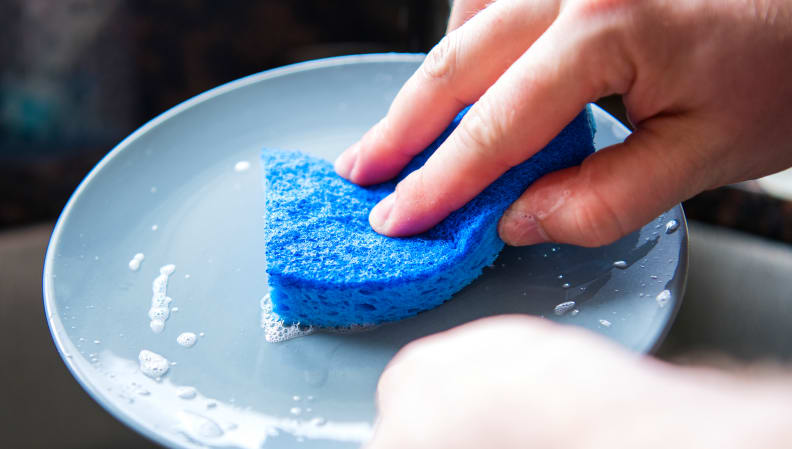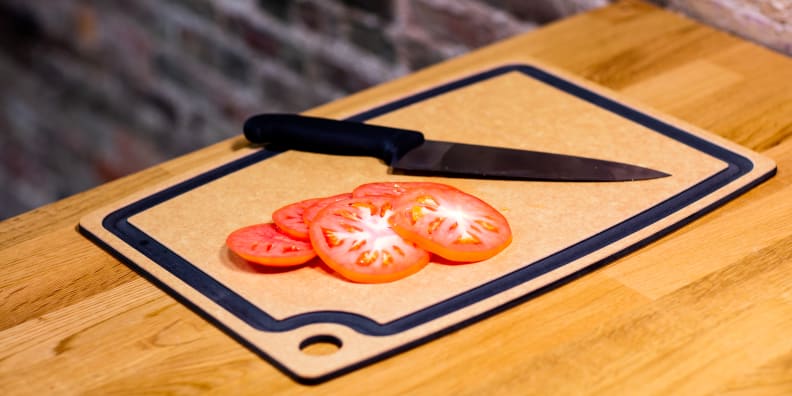The 10 dirtiest items in your house—and how to clean them
And you thought your toilet seat was gross.
Products are chosen independently by our editors. Purchases made through our links may earn us a commission.
There's no place like home to cozy up and kick back and because we’re comfortable in our own spaces, it’s easy to assume these areas are clean. But it turns out our homes are hotbeds for germs and bacteria. Consider that device you’re using to read this article: your keyboard is actually dirtier than a toilet seat, and so is your cell phone. It makes you wonder where else harmful bacteria like E. coli, MRSA, and Streptococcus may be lurking. Your doorknobs? Your pillows?
Spoiler alert: Your home is actually more disgusting than you probably thought. We asked the pros to weigh in on what to clean first, and the cleaning tips to get those germ magnets clean once more.
1. Remote controls
"Remote controls are touched by every family member—even the pets tend to sit on them and slobber them occasionally—so the surface of your remote control is the perfect host for germs and bacteria,” says Lily Cameron, a cleaning professional and supervisor at Fantastic Services. Clean remotes at least once per week, more if someone in the household is sick.
How to clean: Remove the batteries from the back of the remote. Then, wipe over the surface using a lint-free cloth dipped into rubbing alcohol. Next, carefully clean the build-up of dirt inside the buttons using a toothpick. Finally, dry the controller with a clean lint-free cloth and reinstall the batteries.
Learn how to clean your handheld devices.
2. Carpets
Philip Tierno Jr., Ph.D., a microbiologist and immunologist at New York University Langone Medical Center, told Men’s Health that carpets contain about 200,000 bacteria per square inch and are approximately 4,000 times dirtier than a toilet seat. And consider this: Tierno says even the best vacuum cleaner doesn’t reach the bottom of the carpet, leaving behind E. coli, salmonella, staphylococcus, and other bacteria.
How to clean: In addition to weekly vacuum sessions, have rugs professionally steam-cleaned at least once a year, or learn how to clean your carpet yourself. Even better? Invest in machine-washable area rugs, like Ruggable.
Learn more about how to DIY clean your carpet.
3. Pillows
Pillows accumulate some seriously gross stuff, like dead bugs, skin, dirt, sweat, and body oils. To keep the place where you rest your head clean and smell-free, it’s a good idea to freshen up your pillows at least once a month, says Cameron.
How to clean: Check the care label to see if your pillows are machine-washable. If yes, put them in your machine, add two cups of detergent, one cup of baking soda, and Borax. Set on a delicate cycle. Put the pillows in the dryer and dry them completely on low heat. Stop and fluff occasionally to prevent clumping.
Learn more about cleaning your gross pillows.
4. Doorknobs
In one study, a third of doorknobs tested harbored bacteria that causes the common cold. Cameron suggests cleaning door knobs regularly—at least once per week—to remove any germs and bacteria that have been deposited by the often-handled knobs.
How to clean: Wipe doorknobs with a mixture of ½ cup of white vinegar and 1 tablespoon of salt. Let the solution sit for several minutes, then wipe it clean with water.
5. Kitchen sponge

Even the best kitchen sponges are known to trap food particles and house tons of bacteria, including E. coli, says Leanne Stapf, chief operating officer at The Cleaning Authority. It’s important to clean your sponges daily, as a clean sponge will lower the odds of spreading any germs around your kitchen.
How to clean: Place the sponge on the top rack of your dishwasher, and put it on the “heated dry” setting. Alternatively, soak the sponge in vinegar for about five minutes, or in a diluted bleach solution (½ cup of bleach for every gallon of water). Note: Never mix vinegar and bleach, as it can cause noxious gases.
6. Cutting boards

Boards like the Epicurean Gourmet Series are great for cutting juicy foods like tomatoes.
Your cutting board is grosser than you think: Wooden and plastic cutting boards can harbor harmful bacteria like Salmonella—the cause of approximately 1.2 million illnesses in the U.S. every year.
How to clean: To prevent bacteria from growing in tiny cuts or grooves on wooden cutting boards, Cameron suggests cleaning them thoroughly after every use with dish soap and hot water. Once dry, wipe down with vinegar and a cloth, but never soak or put a wooden cutting board in the dishwasher, to prevent warping, cracking, and splitting.
For your plastic cutting boards, apply a solution of 4 tablespoons of baking soda, 1 tablespoon of dishwashing detergent, and 2 tablespoons of hydrogen peroxide and let sit overnight. Wash the cutting board with water and dish soap, and allow it to dry completely.
7. Pet toys
A recent study found that homes with pets had not only a higher concentration of bacteria, but many more types and species of bacteria, too. A lot of that bacteria can be found in their toy basket: Our furry friends slobber all over their toys, which primes the play things as hotbeds for mold, yeast, and other bacteria, says Stapf.
How to clean: To destroy any potential bacteria buildup, soak rubber toys in a solution of one part water and one part white vinegar for 5 to 10 minutes, then run the rubber toys through the dishwasher and let air dry. Toss stuffed and soft toys once they start to tear or smell.
8. Kitchen sink
Yikes: “There’s more E. coli in a kitchen sink than in a toilet after you flush it,” Dr. Charles Gerba told Food & Wine. Needless to say, it’s necessary to give this area of your home a deep clean at least once a month, says Cameron.
How to clean: Once your sink is empty, wash down the entire surface using a gentle soap, soft cloth, and warm water. Make your own cleaning solution by mixing 1 teaspoon of baking soda and a ¼ cup of lemon juice. Apply the mixture over the surface of the sink and let it sit overnight. In the morning, boil some hot water and rinse the entire sink. Completely dry the sink surface using a clean towel.
9. Toothbrush
“Since you use your toothbrush to clean your mouth, you expect it to be clean,” says Doyle James, president of Mr. Rooter Plumbing, a Neighborly Company. “But what many don't realize is your toothbrush is the perfect place for bacteria to hide.” In fact, you're probably brushing your teeth with fecal matter.
How to clean: First off, flush with the lid down and store your toothbrush far from the toilet. If you flush with the lid up, fecal matter can more easily spread around the room and land on every surface, including your toothbrush, says James. Make sure you change your toothbrush every three months. If you get sick, replace your toothbrush once you recover to prevent the germs and bacteria from your illness from passing right back to you.
Learn more about keeping your bathroom clean.
10. Coffee maker
In one analysis, samples taken from coffee makers tested positive for staphylococcus, streptococcus, bacillus cereus, and E. coli. Not exactly what you want you want out of your morning cuppa! Even the drip trays are gross: Researchers recently found that the leftover liquid was host to between 35 and 67 genera of different bacteria.
How to clean:
- Drip coffee maker: Fill the back of the auto-drip tank with warm water. Drop two denture tablets into the water and let them fully dissolve. Run the coffee pot through a regular cycle. Once complete, fill the tank with only warm water and repeat.
- Single pod brewer: Fill the reservoir with warm water, drop in a couple denture tablets and let them dissolve. Run the mixture until the reservoir is completely empty. Repeat the process again with only warm water.
- French press: Separate the lid, the plunger, the filter screens, and the disks, then rinse off any leftover grounds. Fill up the sink with warm water and drop in 3-4 denture tablets. Once they have fully dissolved, add in the French press parts. Let sit until residue is mostly gone, scrub off any excess, then towel dry.
